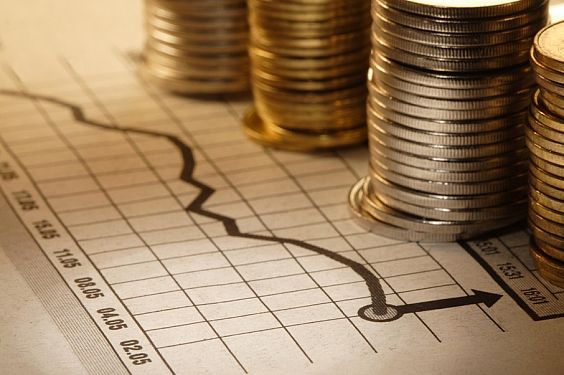For the second year in 2015-16, Arun Jaitley has managed to contain fiscal deficit within BE level, as indicated by CGA monthly data on Central Government finance. The feat has been achieved by tighter control over disbursement, than by improvement in revenue mobilization. Non-plan expenditure bore cuts both in revenue and capex spend, while in plan expenditure plan capex was spared cuts.
In receipts, Net recoveries of loans (+52 per cent), interest receipt (+107 per cent) and non-tax receipt from UTs yielded more than BE, but dividends and profits failed to meet budget expectation despite hectic efforts at garnering more dividend from PSUs, in some cases even at the cost of curtailing their internal resource generation. Fiscal deficit, though around 4.2 per cent more annually, but below BE level worked out to 3.9 per cent of GDP, though lower annually, but exceeding BE, revenue deficit was 2.5 per cent of GDP.
Build-up of rise by Months: Plan capex grows strongly, plan revenue shows declines
The annual rise in disbursement peaked to 19 per cent by July 2015, and reflecting fiscal deficit concerns thereafter, the pace in disbursement came down bringing down the annual cumulative growth in total disbursement to 7 per cent over the fiscal 2016. The growth rate in non-plan expenditure shot up 19 per cent by July-end following a bulge in July. The rate came down to 6.5 per cent by September, but bounced back to 9+ per cent average in H2, with year-end growth put at 8.4 per cent. Non-plan revenue expenditure was up 9 per cent, whereas non-plan capex that included defence capital outlay was marginally less over the fiscal. Defence Capital outlay of Rs 80,117 was around 2 per cent less annually.
There was lot of volatility in plan expenditure intra-year, with the spend witnessing YoY declines in six months! The year-end growth worked out to 1.8 per cent. Following eight months of negative YoY growth, plan revenue expenditure showed 8.5 per cent annual decline. The focus on capex side of the plan account expenditure was underlined by 37 per cent strong increase in plan account capital expenditure, which was robustly spread across months. Ministry of drinking water & sanitation spent 102 per cent of BE, Ministry of Road Transport & Highways spent 100 per cent, Ministry of urban development spent 101 per cent, and Ministry of rural development 100 per cent. Ministry of Power spent 97 per cent budget allocation.
Corporate, income tax, customs decline in March: The growth in total non-debt receipt dropped from 26 per cent over H1 to 17 per cent by December and 7.6 per cent by March-end. Net tax revenue income grew double digits between August-February, but following a decline in March, the cumulative growth dropped to 8.5 per cent. The decline in March tax receipt was in corporate tax, personal income tax and customs duty. 51 per cent strong increase in excise reflected rate changes to mop up extra resources due to falling petrol, etc prices. Non-tax revenue receipt increased 27 per cent, which was evenly spread over the year.
After showing annual decline till February, fiscal deficit by year-end turned out to be Rs 21534 crore (4.2 per cent) higher. This was because Rs 40,521 crore negative fiscal deficit in March 2016, was half of the negative amount a year ago,
Distribution by months
Central government finances, particularly disbursements were more evenly spread over the year 201-16 indicating sound management of relevant aggregates.
Fiscal deficit, net borrowing to bridge the gap between expenditure and non-debt receipt reached 54 per cent of annual borrowing by June, 71 per cent by September, 92 per cent by December and 100 per cent by March-end. 43 per cent of non-debt receipt was mobilized in H1; the ratio picked up to 67 per cent by December and 100 per cent by March-end, indicating some hectic activity to meet revenue targets in the last Q of the year. There was even spread of disbursement over the months: 24 per cent of the annual amount was spent by Q1, 51 per cent by H2, 74 per cent by Q3 and 100 per cent by Q4-end. More importantly, both plan; non-plan expenditure shared the even-spread across the months.
| Central Govt Finance 2015-16 | ||||||||
| Q ended (cum) | Tax receipt | Non-tax receipt | Capital receipt | Total Receipt | Non-Plan Exp | Plan Exp | Total Exp | Fiscal Deficit |
| % increase over previous year | ||||||||
| June | 2.6 | 157.6 | 134.9 | 24.7 | 4.7 | 2.8 | 4.2 | -3.7 |
| September | 14.4 | 51.7 | 249.1 | 25.7 | 6.7 | 3.1 | 5.6 | -13.7 |
| December | 14.0 | 22.6 | 115.0 | 17.3 | 9.5 | -1.9 | 6.3 | -8.3 |
| March | 4.5 | 27.8 | -11.4 | 7.6 | 8.4 | 1.8 | 6.6 | 4.2 |
| % to total for the year | ||||||||
| June | 10.8 | 15.8 | 6.8 | 11.6 | 25.1 | 24.2 | 24.9 | 53.9 |
| September | 39.1 | 57.3 | 40.8 | 42.9 | 51.3 | 53.2 | 51.8 | 71.1 |
| December | 49.2 | 69.1 | 48.3 | 66.5 | 73.6 | 76.2 | 74.3 | 90.8 |
| March | 100 | 100 | 100 | 100 | 100 | 100 | 100 | 100 |
2016-17
In the meantime, Central government fiscal deficit increased 12 per cent during April, the first month of FY17, more or less the same measure as in the year ago month. Total expenditure was up 4.8 per cent, whereas total non-debt receipt was 9 per cent lower annually.











